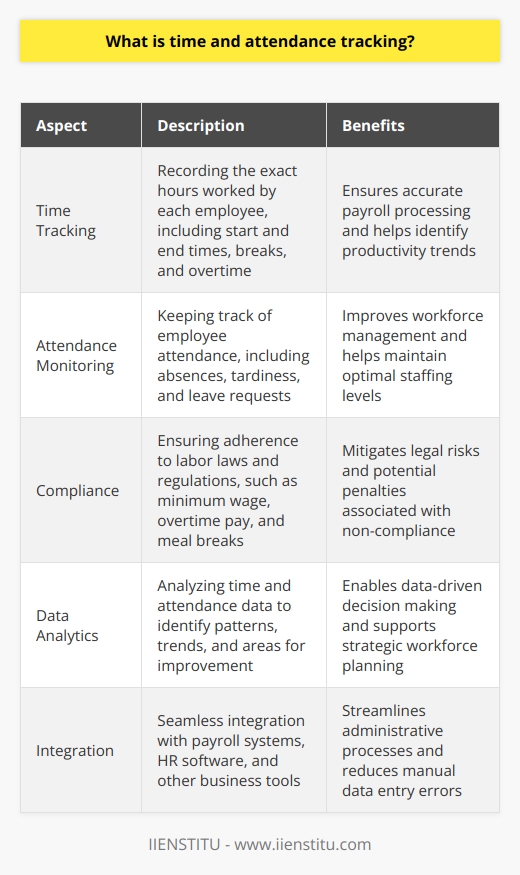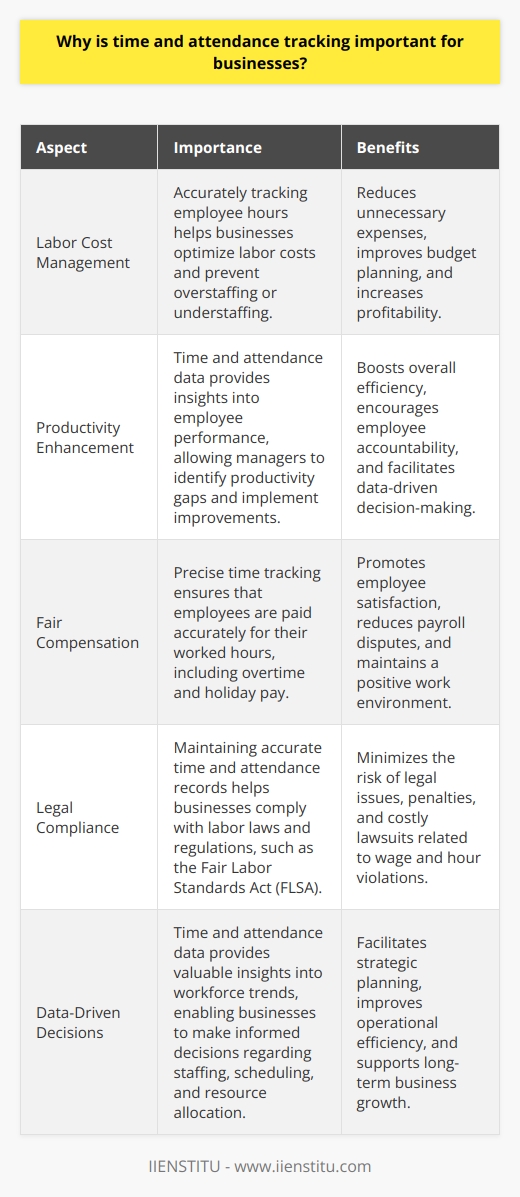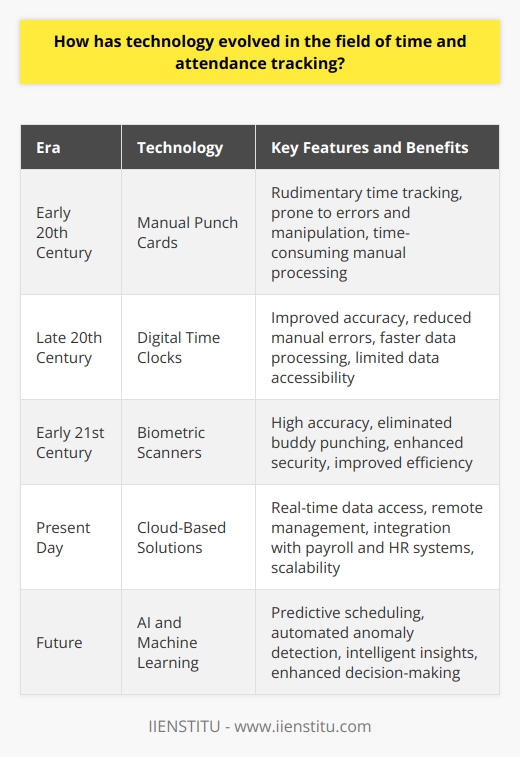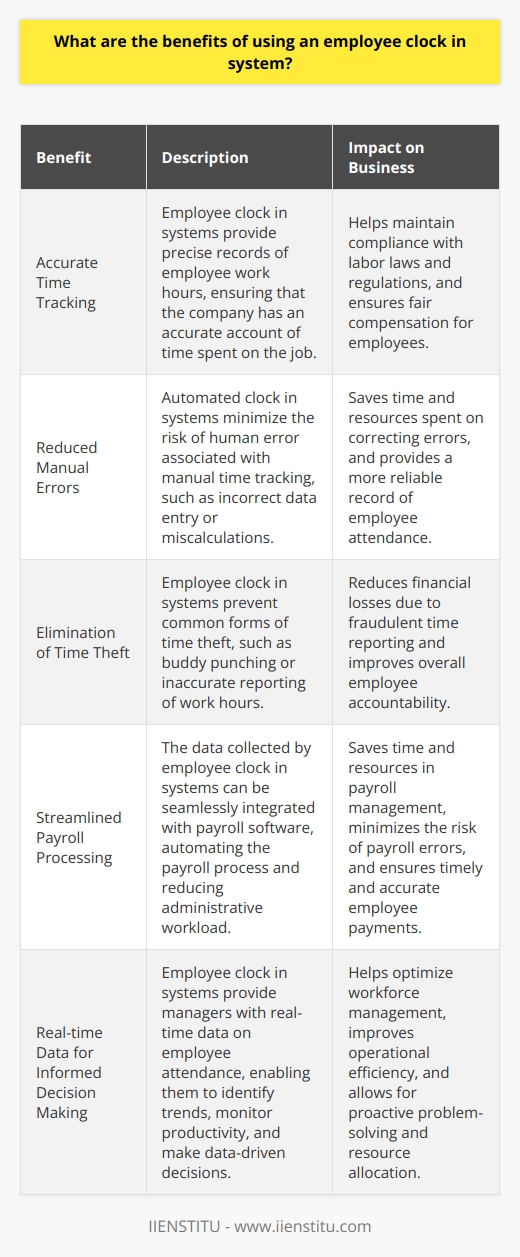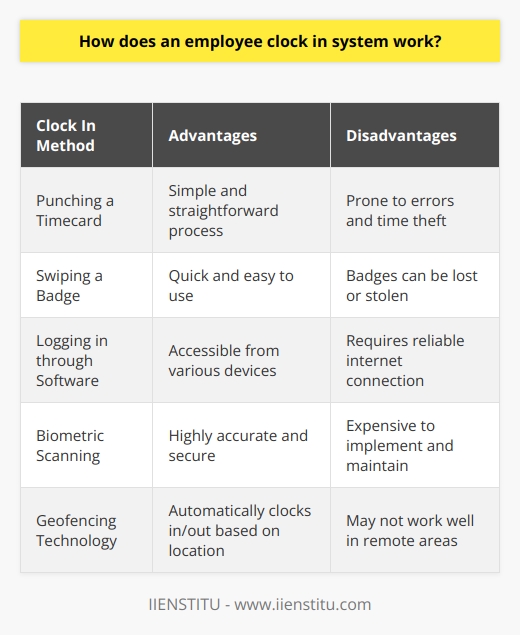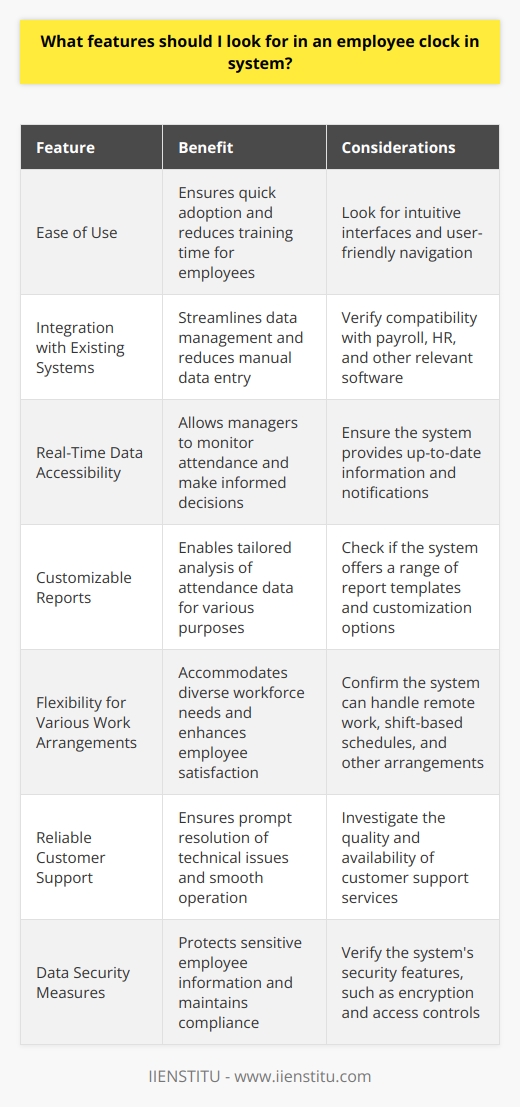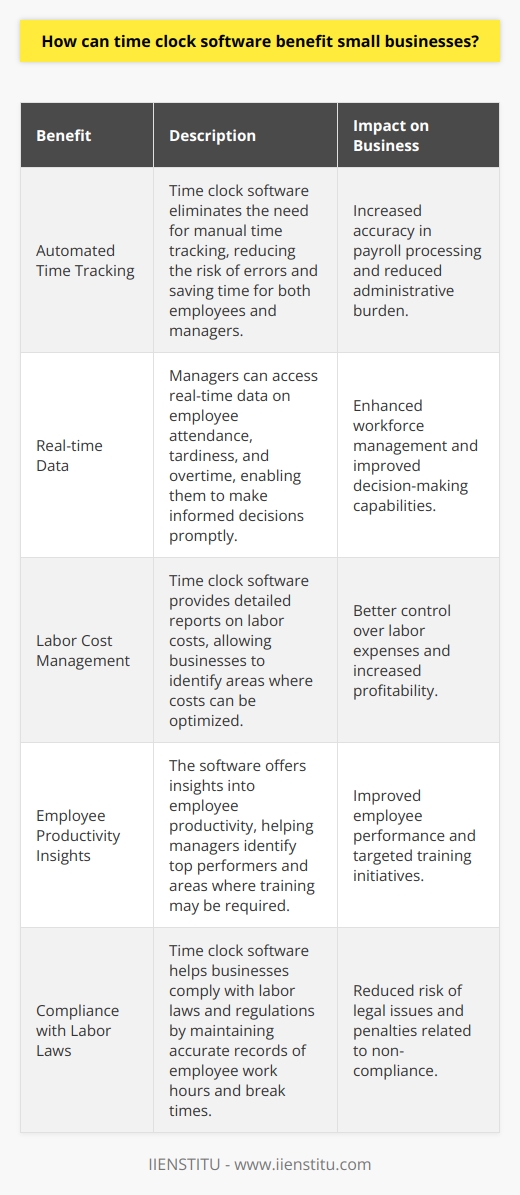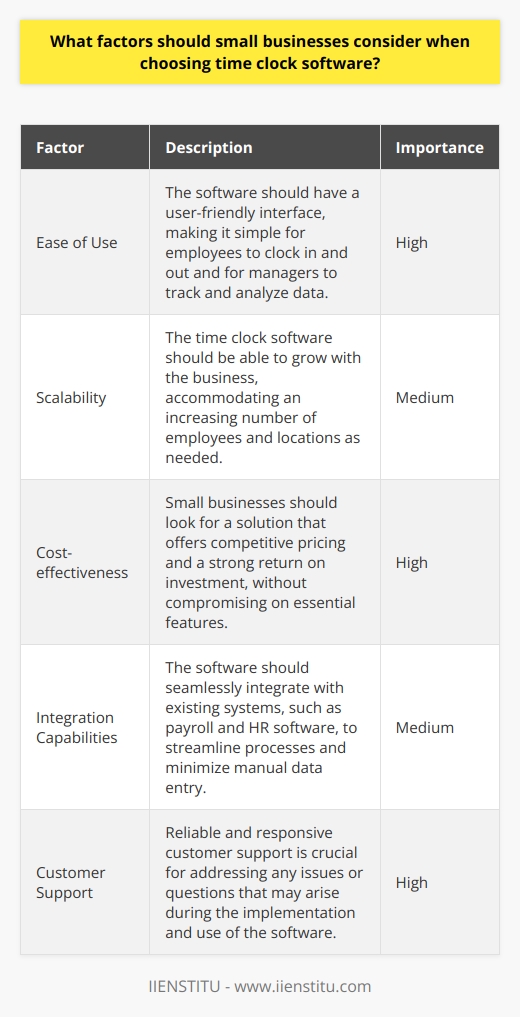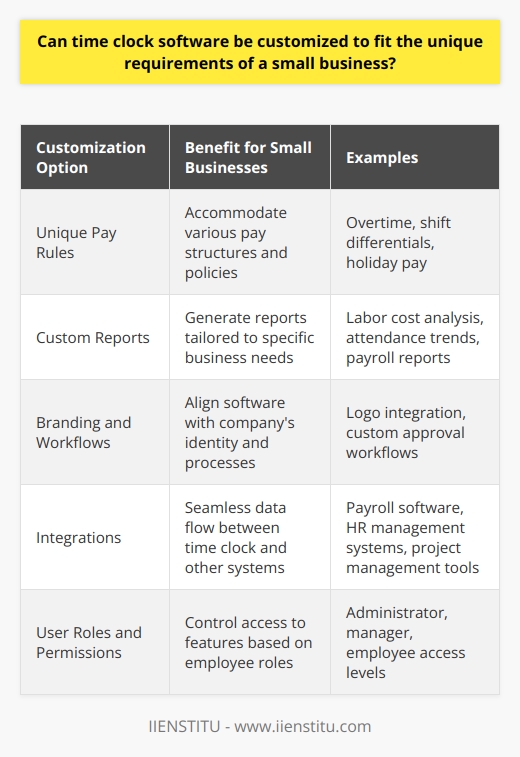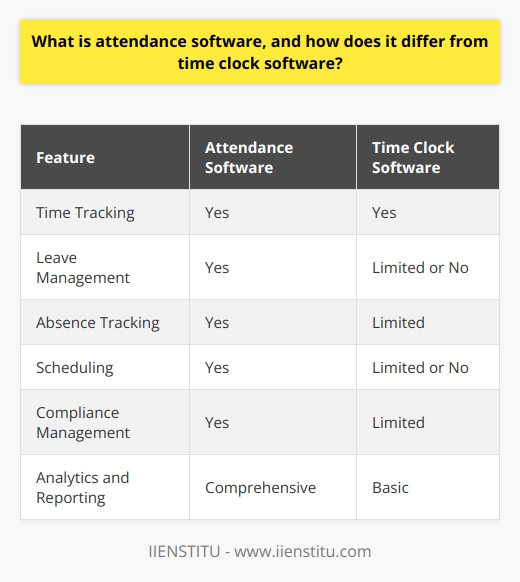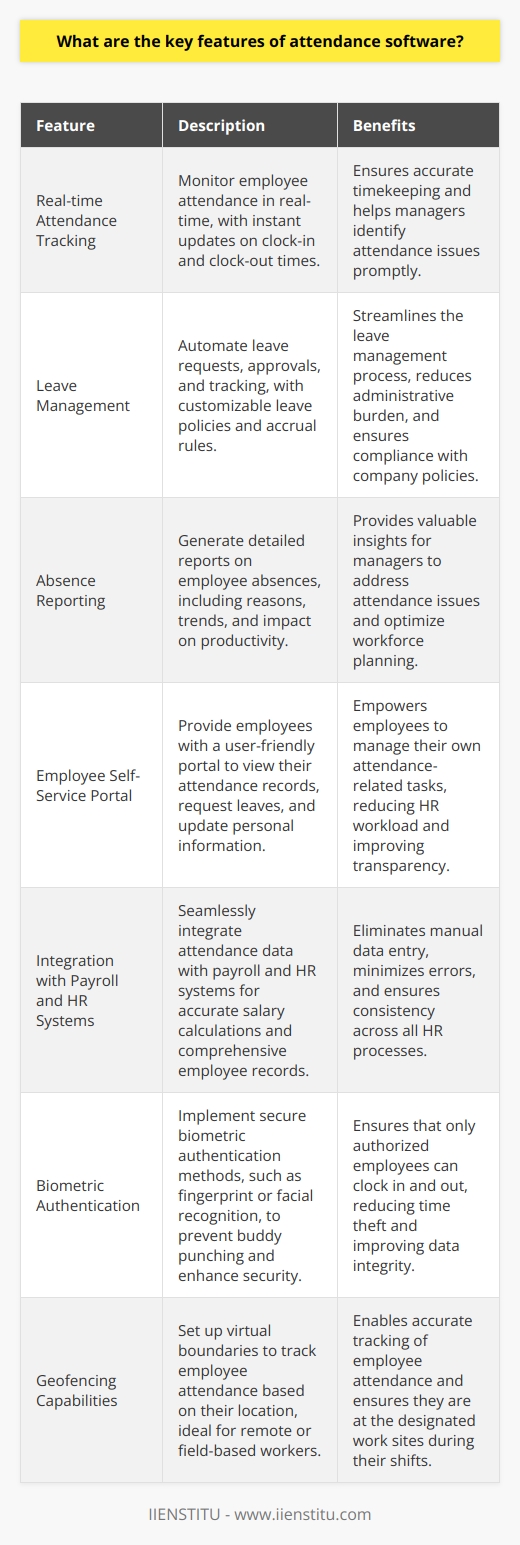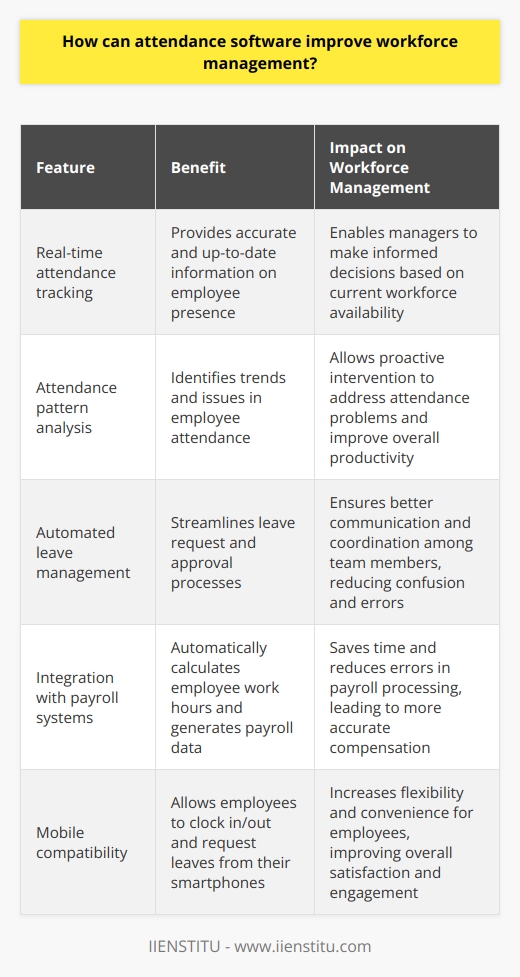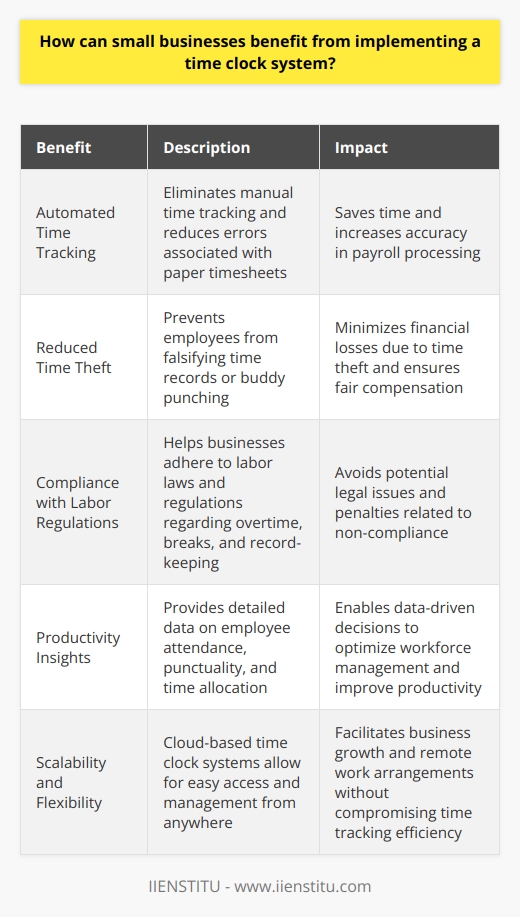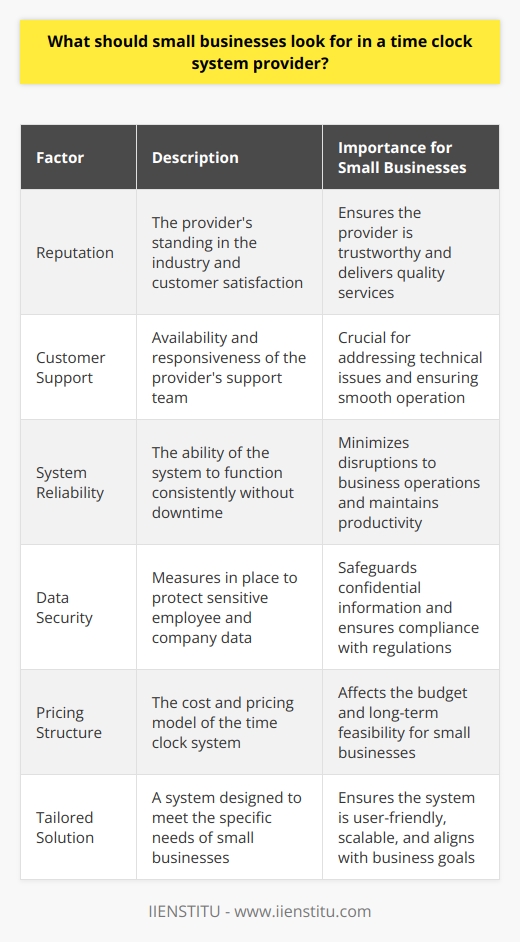Time and attendance tracking is a silent yet powerful core in the functioning machinery of any business. It serves as the foundational base that ensures proper workflow management and resource allocation. In today's fast-paced world, organizations continuously seek ways to optimize efficiency and productivity. At the core of this search lies the imperative to accurately monitor when and how employees engage in their work tasks. This blog aims to explore the evolving landscape of time and attendance tracking, delving into its strategic significance, optimal practices, and technological advancements. We will walk through the historical evolution, analyze the importance of capturing precise work hours, examine the variety of systems available, discuss the critical considerations when choosing a solution, and project the future of employee clock in and out systems in the workplace.
The Evolution of Time and Attendance Tracking

Historical perspective on tracking employee hours
The practice of tracking time and attendance can be traced back to the days when foremen simply kept daily attendance logs. The purpose then was as straightforward as it is today—to ensure an honest day's pay for an honest day's work. Since the industrial revolution and the introduction of shift work, the necessity to regulate labor hours became apparent. The turn of the 20th century saw the birth of mechanical punch clocks, a relic by today's standards, but a significant innovation for businesses at the time.
I remember my first job as a teenager in a local grocery store. We had to manually punch in and out using a time clock with paper cards. It was a tedious process, and I often forgot to punch out at the end of my shift, leading to discrepancies in my paycheck. It's incredible to see how far time clock systems for small businesses have come since then.
Advances in technology and its impact on tracking processes
Each passing decade brought with it a wave of technological improvements that transformed the process of time and attendance tracking. Electromechanical time clocks gave way to computerized systems, which simplified workflows and reduced human error. Now, we are bearing witness to a significant leap in innovation as online certification courses and cloud computing are reshaping how businesses handle workforce management. These advancements not only streamline processes but also feature robust functionalities that extend far beyond mere time tracking.
Example: Transition from traditional punch-in time clocks to modern cloud-based systems

Illustrating this transition, consider a manufacturing firm that once relied on punch cards. Complexity arose with discrepancies and time theft. Introducing a cloud-based time and attendance tracking system, however, not only eliminated such issues but also offered real-time data analysis, which facilitated proactive management decisions. Employees now clock-in digitally, with their data securely stored and accessible for immediate analysis, heralding a new era of workplace time management.
Importance of Accurate Time and Attendance Tracking
Ensuring compliance with labor laws
Regulatory compliance is paramount. Labor laws dictate strict adherence to work hours and overtime payment. Inaccurate time tracking can lead to serious legal repercussions, including hefty fines and lawsuits. For instance, in the United States, the Fair Labor Standards Act (FLSA) requires diligent record-keeping of employee working hours. An hr certificate course might emphasize the gravity of maintaining accurate records, helping HR professionals navigate the complexities of compliance.
As an HR manager, one of my primary responsibilities is ensuring that our company complies with all relevant labor laws. We invested in a robust employee clock in system that automatically calculates overtime hours and generates reports for auditing purposes. It has saved us countless hours of manual work and gives me peace of mind knowing that we are always in compliance.
Managing payroll accurately
Payroll is another critical area that heavily relies on precise time tracking. Payroll inaccuracies can cause financial strain and erode employees' trust. It's essential to ensure that employees are compensated fairly for their time, including provisions for overtime, holidays, and sick leave. Accurate time and attendance tracking assures that payroll is processed effectively, reducing administrative errors and facilitating timely and correct payments.
Integrate time clock software with payroll systems for seamless data transfer
Set up automatic alerts for managers to approve timesheets
Use data analytics to identify and correct payroll discrepancies
Enhancing productivity and efficiency
Measuring productivity and efficiency can be greatly aided by meticulously recording work hours. For organizations, understanding when and how long tasks take not only informs staffing decisions but also highlights areas for process improvements. With the use of sophisticated tracking systems, data analytics can reveal patterns that inform better business strategies, ultimately leading to enhanced operational efficiency.
In my previous role as a project manager, we implemented a time clock program for small business that allowed us to track time spent on individual tasks and projects. The insights we gained from analyzing this data were invaluable. We identified bottlenecks in our processes, optimized resource allocation, and ultimately increased our team's productivity by 25%.
Types of Time and Attendance Tracking Systems
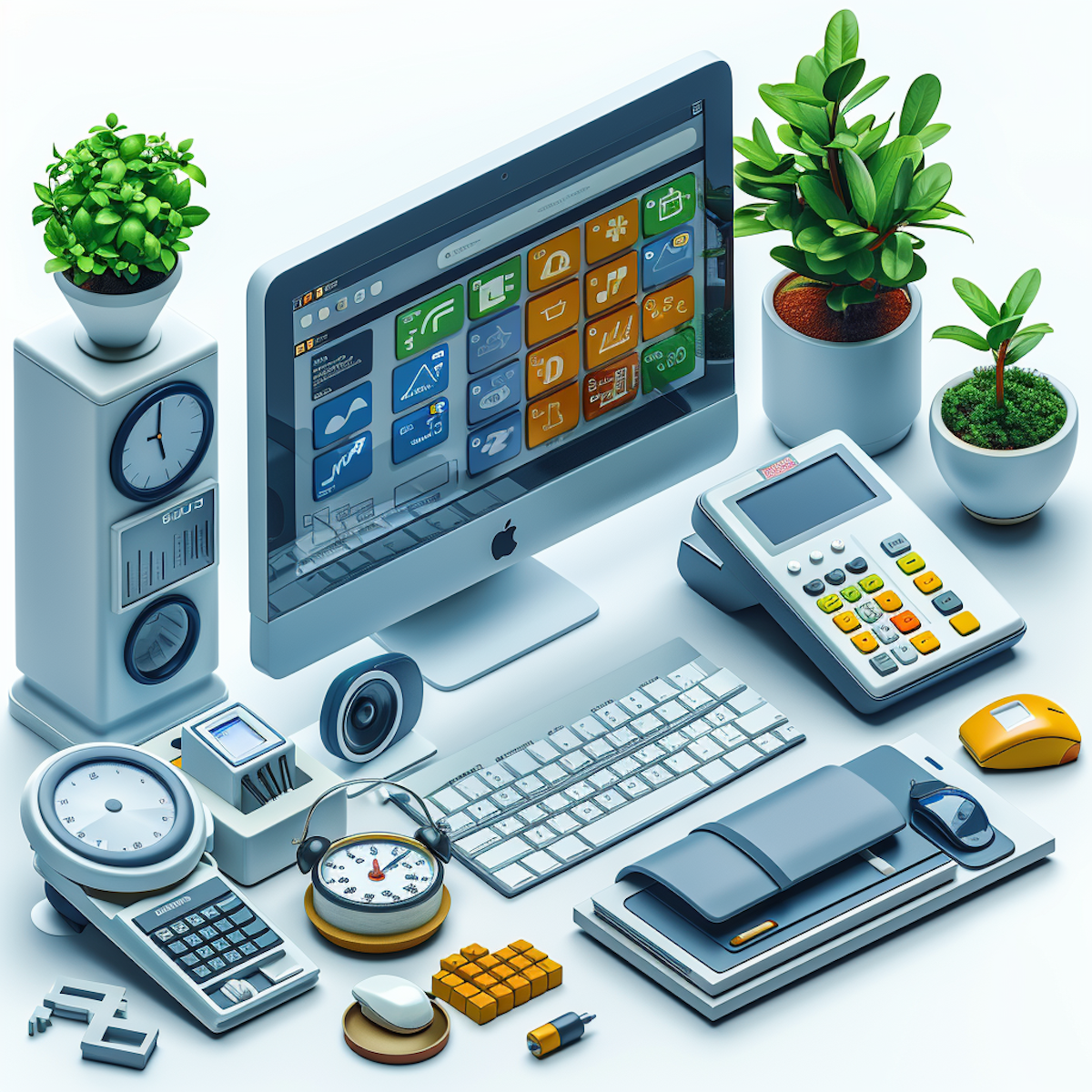
Manual vs digital systems: Pros and Cons
In considering time tracking systems, one must weigh the strengths and weaknesses of manual versus digital approaches. Manual systems, though straightforward, are marred by the potential for human error and fraudulent practices. Conversely, digital systems afford accuracy, save time, and streamline data analysis, yet they can be met with resistance from those who are less technologically inclined and require a significant investment up front.
Overview of modern time and attendance tracking tools
Modern systems are marked by automation and integration with other business processes. Biometric scanners, badge terminals, and mobile applications are a few examples of the tools that have changed the landscape of time tracking. These systems not only enhance security but also provide a wealth of data that can be analyzed for strategic planning and decision-making.
Our company recently switched from a traditional punch card system to a biometric staff clock in system. Employees now clock in and out using their fingerprints, which has eliminated buddy punching and made the process much more efficient. The system also integrates with our HR software, allowing us to easily track attendance, manage schedules, and generate reports.
Case studies: Effectiveness of different systems in various business setups
No single system fits all. A retail chain may find near real-time tracking through mobile applications most effective, while a software development company might prefer web-based logging with screenshot capabilities. Case studies across sectors demonstrate a common truth—selecting the right system depends on one's unique business model and goals.
Retail: A large retail chain implemented a mobile time and attendance tracking app for its employees. The app allowed employees to clock in and out from their smartphones, which was particularly useful for those working in different store locations. The company saw a significant reduction in time theft and improved overall attendance.
Healthcare: A hospital system opted for a biometric time clock system to ensure accurate tracking of nurses' and doctors' hours. The system was integrated with the hospital's electronic health record (EHR) software, enabling automatic logging of time spent on patient care. This helped the hospital comply with labor regulations and optimize staffing levels based on patient needs.
Manufacturing: A manufacturing plant installed badge terminals at entry and exit points to track employee attendance. The terminals were connected to a central time clock software that monitored shift schedules and overtime hours. The system provided real-time visibility into the plant's operations, allowing managers to make informed decisions about production planning and resource allocation.
Factors to Consider When Choosing a Time and Attendance Tracking System
Size and nature of business
The selection of an appropriate time and attendance tracking system must take into account the size of the organization and the nature of its operations. Small businesses may require simple systems with fewer functionalities, while large enterprises might benefit from complex solutions that can scale and integrate with multiple HR platforms.
When our startup was in its early stages, we used a basic spreadsheet to track employee hours. As we grew and hired more people, we realized that we needed a more sophisticated time clock program for small business. We opted for a cloud-based solution that could accommodate our increasing workforce and provide advanced features like scheduling and PTO management.
Budget limitations
Budgeting is a constraining factor for all businesses, particularly when it comes to investing in new technologies. Cost must be evaluated not only in terms of the purchase price but also considering the long-term value it brings to the company. A system that seems expensive initially may offer significant ROI by reducing labor costs and improving productivity.
Consider the total cost of ownership (TCO), including hardware, software, installation, training, and maintenance
Look for scalable solutions that can grow with your business
Evaluate the potential savings in time and resources that the system can provide
Specific needs of the company
Every business has its unique set of requirements. Selection criteria must include considerations such as industry-specific features (e.g., project-based time tracking for consultants), ease of use, access controls, and reporting capabilities. Understanding and mapping these needs go a long way in selecting a system that perfectly aligns with business functions.
As an IT consultant, I often work on multiple projects simultaneously. When choosing a time and attendance tracking tool for my business, I prioritized features like project and client-specific time tracking, billable hours reporting, and integration with my invoicing software. These functionalities are essential for accurately billing my clients and managing my team's workload.
Integration with other systems in the organization
How well a new time and attendance system can integrate with existing infrastructure is crucial for seamless operations. The ability to communicate with payroll, HR information systems, and other enterprise management software can dictate the success or failure of a new system's implementation.
Assess the compatibility of the time clock software with your current IT environment
Look for systems with open APIs and pre-built integrations with popular business applications
Consider the ease of data migration from your existing system to the new one
Examples: Situations in which different systems may be more appropriate
Consider a tech startup that uses several cloud-based tools for project management and collaboration. A compatible tracking system for this company would be one that integrates well with their existing stack and caters to a workforce that is likely remote. Conversely, a manufacturing plant may prioritize rugged hardware terminals that can endure a harsher setting. Matching the right system to the right environment is key to optimal functionality.
How to Implement a Time and Attendance Tracking System
Steps for transitioning to a new system
Transitioning to a new tracking system begins with a comprehensive analysis of organizational needs, followed by a careful selection process that meets those criteria. Implementation should be phased, with a clear timeline and benchmarks. Transparency with employees about changes, and the reasons behind them, can foster acceptance and ease the transition.
Assess current processes and identify areas for improvement
Define system requirements and select a suitable solution
Develop an implementation plan with milestones and deadlines
Communicate the change to employees and address their concerns
Conduct thorough testing and training before the full rollout
Monitor adoption and gather feedback for continuous improvement
How to train employees on the new system
Effective training is an indispensable part of the implementation. Employees must not only understand how to use the new system but also why it's beneficial to them. Training should be tailored to different learning styles and include hands-on practice. Continuous support should be available to address questions and concerns swiftly.
When we introduced a new employee clock in and out system, we organized a series of training sessions for our staff. We created video tutorials and step-by-step guides to cater to different learning preferences. Our IT team also set up a dedicated helpdesk to provide ongoing support. By investing in comprehensive training, we ensured a smooth transition and high user adoption.
Ways to address potential challenges during the implementation process
Hurdles will arise—technical glitches, resistance to change, or data migration issues. An open line of communication, where feedback is welcomed, and problems are addressed proactively, can alleviate much of the adjustment pains. A clear contingency plan should be in place to tackle unforeseen challenges.
Establish a cross-functional implementation team with representatives from HR, IT, and other relevant departments
Regularly communicate project updates and milestones to stakeholders
Provide channels for employees to report issues and suggest improvements
Have a backup plan in case of system failures or data loss
Case study: Successful implementation of a tracking system in a business
One illustrative case is an international retail brand that adopted a sophisticated biometric tracking system. The endeavor included thorough staff engagement, multiple training sessions, and a responsive IT support team, resulting in a highly successful roll-out that improved punctuality, reduced payroll errors, and ultimately saved the company significant time and financial resources.
The company's HR director shared, "Implementing a new time and attendance tracking system across our global operations was a daunting task. However, by involving employees in the process, providing comprehensive training, and maintaining open lines of communication, we were able to achieve a seamless transition. The results have been remarkable—we've seen a 30% reduction in payroll discrepancies and a 20% increase in overall productivity."
Future Trends in Time and Attendance Tracking
Emerging technologies and their potential impact
The future of time and attendance tracking is likely to harness emerging technologies such as machine learning, AI, and IoT. These innovations could further automate tracking, predict staffing needs, and provide new levels of analytic insight.
Machine Learning: Algorithms can analyze historical attendance data to identify patterns and predict future trends, enabling proactive workforce planning.
Artificial Intelligence: AI-powered chatbots can handle employee queries related to time tracking, freeing up HR resources for more strategic tasks.
Internet of Things: Wearable devices and sensors can automatically log employee hours and monitor productivity in real-time.
Future challenges and opportunities
With technological progress comes the challenge of maintaining privacy and data security. The opportunities to improve efficiency and accuracy in time tracking, however, are too significant to ignore. Harnessing these technologies responsibly can lead to unprecedented productivity gains.
As an HR technology enthusiast, I believe that the future of time and attendance tracking lies in the convergence of AI, IoT, and blockchain. Imagine a system where employees' hours are automatically logged using wearable devices, the data is securely stored on a decentralized blockchain network, and AI algorithms optimize schedules and predict staffing needs. While there are certainly challenges to overcome, such as data privacy concerns and technological adoption, the potential benefits are immense.
Example: Possible application of Artificial Intelligence in time and attendance tracking
Imagine a system that not only tracks hours worked but also provides predictive analytics on staff fatigue levels and recommends optimal schedules to avoid burnout. AI's application in time management could revolutionize not just efficiency but also employee wellness.
An AI-powered time clock software could analyze data from various sources, such as employee attendance records, project timelines, and even biometric data from wearable devices. By identifying patterns and correlations, the system could alert managers when an employee is at risk of burnout and suggest proactive measures, such as redistributing workload or offering additional support. This holistic approach to time and attendance management would not only improve productivity but also promote a healthier work-life balance.
Conclusion
Time and attendance tracking serve as the heartbeat of a company's operational efficiency. From its historical roots to the complex digital systems of today, this practice remains essential for compliance, payroll management, and productivity improvement. The technology's ongoing evolution presents businesses with both challenges and significant opportunities. Embracing these advancements with careful planning, thorough training, and a strategic approach can reap extensive benefits for any organization. With the advancements in technology, businesses are well-advised to stay ahead of the curve by adopting and adapting to the latest in time and attendance tracking solutions.
As we navigate the ever-changing landscape of work, it's crucial to recognize the value of accurate and efficient time tracking. By leveraging the right tools and strategies, companies can not only streamline their operations but also foster a culture of trust, transparency, and accountability. The future of time and attendance tracking is bright, and I'm excited to see how emerging technologies will shape this space in the years to come.


